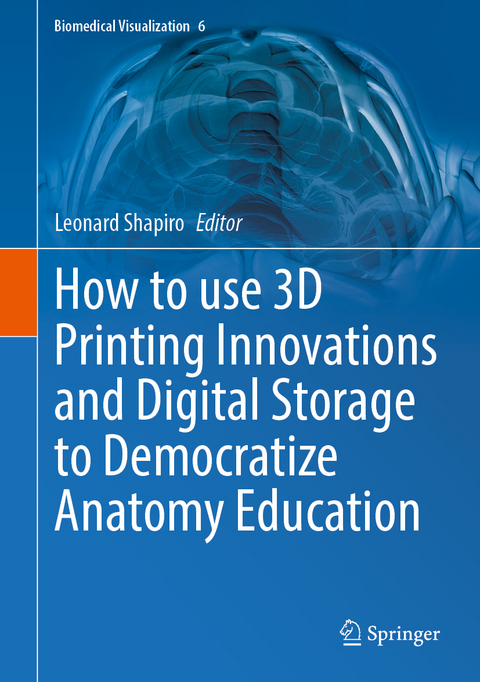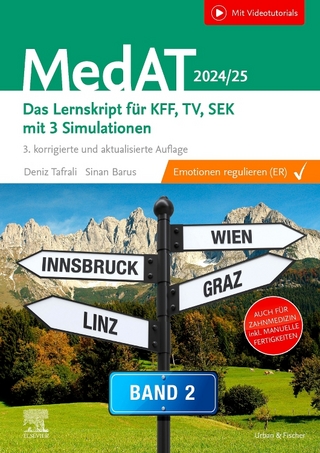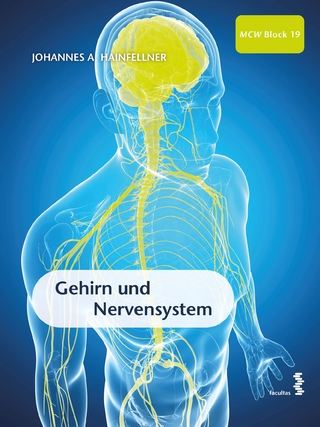
How to use 3D Printing Innovations and Digital Storage to Democratize Anatomy Education
Springer International Publishing (Verlag)
978-3-031-68500-2 (ISBN)
- Noch nicht erschienen - erscheint am 06.11.2024
- Versandkostenfrei innerhalb Deutschlands
- Auch auf Rechnung
- Verfügbarkeit in der Filiale vor Ort prüfen
- Artikel merken
This edited book contains chapters that describe bespoke three-dimensional (3D) printing aimed at democratizing anatomy education by providing open-source scans for download and printing as 3D models. The long history of anatomical models as educational resources is explored in fascinating detail, from wax models through to a range of cutting-edge 3D printers. In a related chapter, a veterinary anatomy educator describes a transformation in teaching and learning methods in veterinary education using Augmented Reality (AR), Virtual Reality (VR) and 3D visualization methods like CT or MRI images which can be used to reconstruct complete 3D virtual models, as well as 3D prints from these reconstructed scans.
The first digital, cloud-based human skeletal repository in southern Africa is an extensive and categorized 'bone library' globally accessible for use in education and research. A chapter details a digital protocol for the bioprinting of a 3D acellular dermal scaffold (ADS) for use in wound healing, as an alternative to skin grafting for secondary intention wound healing. A chapter offers an extensive guide to applied anatomy for acupuncture and is provided in 4 parts viz, upper limb, lower limb, trunk, head and neck. Each part of the chapter is replete with beautiful cadaveric images including annotations that relate specifically to information in the text. We look at vertebral artery variations and its role in clinical conditions, current insights into polycystic ovarian syndrome, and visual interpretation using multiplex immunoassay of serum samples.
This book will appeal to educators of both human and animal anatomy who have a keen interest and focus on the use of bespoke 3D printing, augmented and virtual reality, as well as acupuncture practitioners, clinicians, regenerative medicine specialists, surgeons, tissue engineers and artists.
Leonard Shapiro - Leonard is honorary lecturer in the Department of Family, Community and Emergency Care, Faculty of Health Sciences, University of Cape Town (UCT). He is an artist and educator working in the health sciences and designs tailored, art-based exercises for application within the anatomical education curriculum, specifically aimed at improving observation and three-dimensional (3D) spatial awareness. Leonard has developed a novel, multi-sensory observation method, that specifically employs the sense of touch (haptics) coupled with the simultaneous act of drawing. It is called the Haptico-visual observation and drawing (HVOD) method.
In anatomy education, the benefits of using the HVOD method include i) the enhanced observation of the 3D form of anatomical parts, ii) the cognitive memorization of anatomical parts as a 3D mental picture, iii) improved spatial orientation within the volume of anatomical parts, and iv) an ability to draw. Leonard teaches the HVOD method to medical students and clinicians in South Africa and abroad.
Professor Iain Keenan (Newcastle University) and Leonard Shapiro (UCT) have designed a Massive Open Online Course (MOOC) consisting of art-based exercises for improving student 3D spatial awareness and their observation of human anatomy. This online course is titled Exploring 3D Anatomy and is available to medical students globally, as a supplement to their anatomy curriculum.
A second online course titled Exploring 3D Anatomy Plus was developed for clinicians and surgeons for improving their 3D spatial awareness, leading to improved 3D spatial skills.
Leonard contributes to the anatomy education discourse via publications and articles and by presenting at anatomy conferences.
Leonard Shapiro, BSocSci, BA Fine Art (Hons).
Part I. 3D Printing, Digitization, Anatomical Education.- Chapter 1. Democratizing Anatomy Education with Bespoke 3D-Printed Models as Visualization Tools.- Chapter 2. Evolution of Veterinary Anatomy Education: A Paradigm Shift from Dissection to Digitalization via 3D Visualizations, 3D Reconstructions and 3D Models.- Chapter 3. Bakeng se Afrika: Digital Skeletal Repository: Advancing Biological Anthropology and Medical Research in South Africa.- Chapter 4. Bone Flute: An Art-Science Research Project.- Part II. 3D Bioprinting, Clinical Practice, Imaging.- Chapter 5. Digital Protocol for the Bioprinting of a Three-Dimensional Acellular Dermal Scaffold.- Chapter 6. Applied Anatomy for Acupuncture.- Chapter 7. Morphological Variations of the Vertebral Artery: Clinical Implications.- Chapter 8. Polycystic Ovarian Syndrome: Current Insights.- Chapter 9. Visual Interpretation Using Multiplex Immunoassay of Serum Samples.
| Erscheint lt. Verlag | 6.11.2024 |
|---|---|
| Reihe/Serie | Biomedical Visualization |
| Zusatzinfo | X, 240 p. |
| Verlagsort | Cham |
| Sprache | englisch |
| Maße | 178 x 254 mm |
| Themenwelt | Medizin / Pharmazie ► Studium |
| Schlagworte | 3D Printing • Anatomy Education • Bioprinting • Dentition • Digital Scanning • Imaging • Surgery |
| ISBN-10 | 3-031-68500-8 / 3031685008 |
| ISBN-13 | 978-3-031-68500-2 / 9783031685002 |
| Zustand | Neuware |
| Haben Sie eine Frage zum Produkt? |
aus dem Bereich


